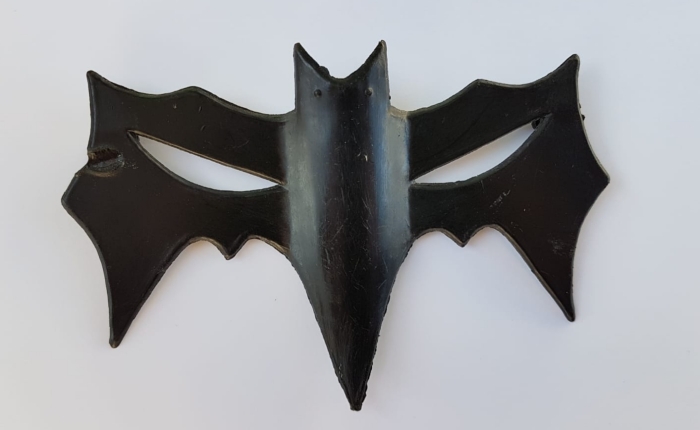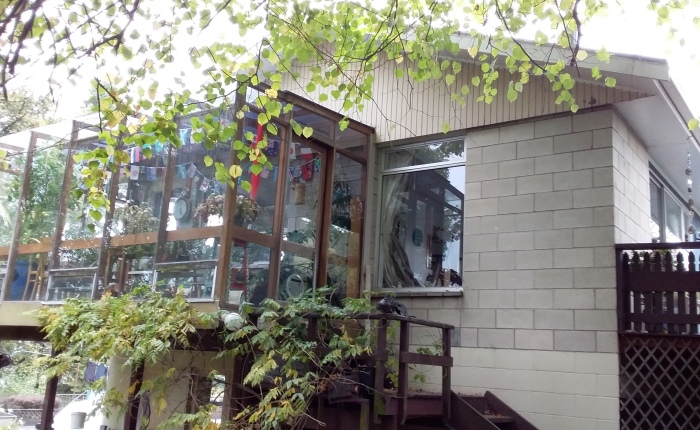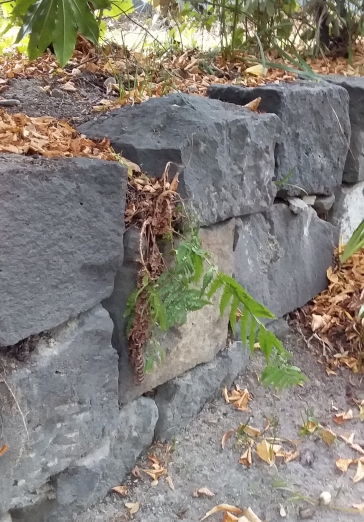As a follow-on from my last post, where I wrote about my investigation into my own home, I would like you to consider what you might leave behind.
I don’t mean the precious objects you bequeath to family: perhaps artworks, jewellery or photographs but the everyday objects you misplace and forget; the marks and symbols that you leave in your house and property that give clues to who and what you are.
I was inspired to create this post by the random discovery we had yesterday while gardening; as I weeded and hoed, my husband was shoveling nicely matured compost from the bin to be layered under pea straw. I looked up when he called – had I lost an egg-cup? There, discarded into the compost was a stainless steel egg-cup, accidentally scooped up and scraped into the compost bin with the egg-shells after a lunch last year. We had a laugh – I hadn’t missed it at all. And isn’t that often the case when you lose something – trying to remember where you last had it? Sometimes its years later and you are thinking I used to have such-and-such – whatever happened to that?
As adults with things occupying our minds and distractions that we lose stuff: I have lost more earrings than I care to remember, and even precious rings, but that is another story. Particularly as children we leave things behind and lose things we shouldn’t – (a new jersey left down at the swings, our homework book left at school – who hasn’t?). Some time ago my mother reminisced back to her early childhood and how she had lost some favourite dollies:
Noeline’s lost dolls
Down [the] track which went past the back of the house – it went down beside the fence-line (which was barberries and further along was covered with blackberries) and on the other side of the track were the broom bushes that used to come up. I used to love it to go and sit in under there when the sun was hot and I would play there. As I got a bit older I sort of would play round further and further. Oh it was lovely – there were bits of moss and lichen and it smelled all nice and sort of that mossy sort of a smell that you get. There was little ferns growing here and there. The broom must have been growing there uncut for years because some of it was quite tall – you could just walk in (or crawl in ) around under it.
I found a stump – a stump of a tree that had been cut down and it was in sort of a grassy bit and it had all the little lichen , the one that we used to call the ‘match-stick lichen’ because the fruiting bodies came up like a little wax match-head. There was an opening in one side (probably just where it had rotted a bit) and I would put my little bits and pieces that I was playing with there. I used to take my dolls (I had all sorts of little dolls that various members [of family] had given me) I’d go down there and play, then Mum would call out that dinner was ready and I would have to gather up my stuff and come back.
When I had just got over whooping cough and one thing and another Dad went off to Christchurch and he came home and he brought me a beautiful black rabbit and he brought me a pair of Mabel Lucie Atwell dollies. He said they were ‘dollies’ and I always called them ‘The Dollies’. One was red, and one was blue – they were celluloid dolls. They had articulated arms and legs and they were like baby dolls with these round pink Mabel Lucy Atwell faces and in little hooded suits, like simulated knitted suits.
I loved those two little dolls! They were only about that big – I suppose about 10 inches at the most – and I could hold them so nicely and I used to play with them down there [at the stump]. They went missing – I missed them when we went to Kumara: I didn’t have the dolls. I wondered, I always wondered what had happened to them. It wasn’t until years later, I dreamt about playing down by the stump with these dolls and I can recall that I tucked them inside there and I must have left them there. Being a kid, you forget things for a time and go and play with other things and never sort of thought of them again.
NR McCaughan 2010
artefact noun an object made by a human being, typically one of cultural or historical interest.
So where do these things turn up? It is quite common to find old newspapers in drawers or cupboards, or even ceilings. Mantelpieces hide hold photographs, tickets, invitations and letters that have slipped down the gap between the back and the wall. Gaps in the floorboard can hide buttons, beads, hairpins or hatpins. Under houses; either the crawl-space or basement were where people put stuff and forgot about it, kids crawl under houses, decks and verandahs to play. Shrubbery hides balls and toys. Garden sheds and garages typically acquire over several generations of inhabitants a number of odd things; bottles, jars, tins and tools stored up high but forgotten. More rarely, something is deliberately hidden; to be retrieved later, or for someone else to find.
In earlier, less environmentally conscious times, people discarded their rubbish that could not be recycled into middens: pits (or old wells or long-drop toilets) which they threw broken crockery, tins, bones and bottles. If you find a midden it can be possible to date it by the markings on china and glass. If your house or land is quite old and the midden has a lot of intact items, it is worth contacting your local museum or historical society for advice before disturbing too much. Up until the 1970s many people happily burnt their rubbish at home, either in a destructor, a little coal fired stove in the kitchen, or outside in the back yard in an incinerator.
One thing to look out for in an old house where there was a growing family is evidence of children’s heights being recorded on a doorpost, that and the odd bit of subversive (or blatant) graffiti. I marked my children’s heights at my two previous houses – I even transferred the results to a long sheet of paper when we moved. At one of my former homes, the previous owner was projectionist at the Majestic Theatre – when we demolished the outside toilet, we discovered the inside was lined with the long banner movie posters printed on heavy card that used to be displayed over the entrance doors at the Movie Theatre.
The most common thing to find in the garden of a house is lost toys; the very first find I have is from a house we lived in in Pleasant Point in the mid-1960s. I often wondered about the rest of the tea set and if a little girl mourned the loss of her jug.

The next items are from the first home I owned, an Edwardian villa in Church Street, Timaru from 1983-1996. The first, a tiny dolls head was from an area in the back lawn that had a lot of broken crockery and glass; probably the site of the household midden. Very cheaply mass produced, probably using an old mould which has lost detail. These heads were sold in a range of sizes to be made up at home with a cloth body. This one would be for a dolls house.

Not associated with a house but I cant help including this little beauty. Not long after I found the head (above) I found another tiny doll, this time on a grassy area by the beach on Caroline Bay. These dolls were produced for over 60 years, the hairstyle suggests towards the end of the second decade of the 20th Century. These would likely have been sold on the Bay along with other toys to holidaymakers during the summer. No doubt somebody’s day turned to tears when it was discovered to have slipped from a little hand.

Sometimes precious objects are broken and discarded, but how this broken vase ended up in the hedge at Church Street is a mystery; perhaps it was knocked from a windowsill (only a couple of metres away?).

Everyday items were sometimes kept for further use – storage of anything from screws to pieces of string were kept in a handy wee jar:


Perhaps surplice to requirements, stored then forgotten, these lightweight chairs were very popular for many years. The styling went out-of-date after the 1920s when angular lines, uncluttered detail and cream and green painted furniture became more favoured in the kitchen.

Now into the 20th Century. All of the following items (plus some others: marbles, plastic dolls’ cup, untold tennis and bouncy balls) we have found in the last few years at our Grants Road house, and all but one are toys: this points to the young occupants encouraged to use the garden and woodland extensively as their playground (their tree house was featured in my last post).
The first item is a piece of tableware but may have been used as a toy – it is a very old fashioned style for the 1970s and 80s and may have been given to a child to dig with. However, it may also have a remnant of the earlier occupants of the site, perhaps an accidental addition to a midden?

The next three items all date from around the same era and after 30 odd years in the undergrowth after a wash are remarkably intact. Children in the 1980s owned a lot more toys than previous generations, with quality falling in favour of cheap production methods. Many branded toys were marketed to promote films, as spin offs from television shows, and “collections” including for fast food companies.




So, what have you lost? and what have you found? What do the objects tell you about the people who lived in your house?
Take any of these humble objects and you could write a story of what they started life as and what they became, their trajectory from precious to mundane. Who owned them, when they were bought, what they were used for and how they became lost. Who forgot about them, who mourned their loss? And how long did they remain hidden before being found again?
Do you know anything more about the objects I found? If so leave me a message!





























